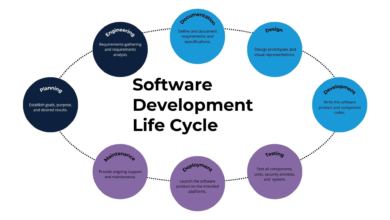Marketing Technology Mastery: 17 Game-Changing Innovations Driving Digital Growth

Why Marketing Technology Matters More Than Ever
Let’s face it—marketing isn’t what it used to be. In the past, brands relied heavily on TV spots, cold calls, and print ads. But today, with customers researching, comparing, and deciding online before they ever contact a business, marketing has gone digital—and marketing technology is leading the charge.
The Digital Shift in Consumer Behavior
Consumers today expect:
- Personalization at every touchpoint
- Real-time responses
- Seamless cross-channel experiences
That’s where MarTech (short for marketing technology) comes in. It’s the digital toolbox that powers modern marketing—from automation and analytics to content creation and customer insights.
Bridging the Gap Between Data and Strategy
Marketers have more data than ever before. But data alone doesn’t drive results—insight does. Marketing technology bridges that gap by:
- Automating repetitive tasks
- Analyzing user behavior
- Enabling smarter, faster decision-making
Whether you’re launching a campaign or optimizing a sales funnel, MarTech helps ensure every move is strategic and data-backed.
What Is Marketing Technology (MarTech)?
At its core, marketing technology refers to the software, tools, and platforms used to plan, execute, and measure marketing campaigns across digital and traditional channels.
Core Components of MarTech
Common categories include:
- CRM (Customer Relationship Management) tools like HubSpot or Salesforce
- Email marketing platforms like Mailchimp
- SEO tools like SEMrush or Ahrefs
- Data analytics platforms like Google Analytics
- Content management systems like WordPress
- Social media tools like Buffer or Hootsuite
The right combination of these creates what’s known as a MarTech stack.
Examples of MarTech in Action
Let’s say you’re launching a new service. A basic MarTech workflow could involve:
- Using Google Trends to identify hot topics
- Writing a blog post in WordPress
- Sharing it via Buffer across multiple platforms
- Promoting it through a Mailchimp email campaign
- Tracking engagement via Google Analytics
- Retargeting visitors using Facebook Ads Manager
Each tool works together to create a seamless customer experience.
The Evolution of MarTech: Then and Now
It wasn’t long ago that marketers relied on spreadsheets and intuition. Now, intelligent systems guide decisions in real time.
From Email Blasts to AI-Powered Automation
What began with basic automation—like scheduled emails—has evolved into:
- AI-driven content recommendations
- Smart segmentation
- Predictive lead scoring
Modern tools can personalize a user’s journey from the first click to final conversion.
Why Innovation Is Accelerating
The growth of MarTech is fueled by:
- Cloud computing
- Mobile-first adoption
- Consumer demand for real-time personalization
- Advances in artificial intelligence
With over 10,000 tools available today, the pace of innovation is only speeding up.
MarTech and Behavior Change Marketing
MarTech isn’t just about mechanics—it’s about moving people. That’s why pairing it with behavior change marketing creates such powerful results.
Understanding Customer Triggers and Motivation
Behavior change marketing taps into:
- Emotional drivers
- Decision-making patterns
- Psychological nudges
Using tools like the Orion Platform, marketers can build journeys that align with how humans think, act, and buy.
Aligning Tools with Human Psychology
Effective campaigns don’t just blast messages—they guide users through:
- Awareness
- Consideration
- Action
- Habit formation
MarTech tools help design these journeys with customized content, reminders, and reinforcement—exactly when users need them.
Key Functions of Marketing Technology Platforms
Understanding what MarTech can do helps you get the most from your stack.
Campaign Management and Automation
Plan, execute, and adjust campaigns across:
- Email
- Social media
- Paid ads
- SMS or in-app messaging
Automation allows you to deliver the right message at the right time without manual effort.
Data Collection and Customer Insights
Modern platforms gather data from:
- Website visits
- Email opens and clicks
- Social interactions
- Purchase history
This data drives segmentation and personalization strategies.
Personalization and Targeting
With automation and AI, you can:
- Show dynamic content
- Customize offers
- Adjust tone and visuals per user
It makes your marketing more relevant—and more effective.
Popular Marketing Technology Categories
Choosing tools can feel overwhelming. Let’s simplify by breaking down the most impactful MarTech categories.
CRM and Customer Data Platforms (CDPs)
CRMs like Salesforce or HubSpot help manage leads and client relationships. CDPs go a step further by integrating data across platforms—websites, emails, ads—into a unified customer profile.
Benefits include:
- Better segmentation
- Personalized experiences
- Streamlined sales pipelines
Email Marketing and Lead Nurturing Tools
Platforms like ActiveCampaign and ConvertKit allow you to:
- Automate follow-ups
- Score leads based on behavior
- Drip personalized campaigns over time
Lead nurturing helps move prospects down the funnel—even while you sleep.
SEO, Analytics, and Performance Trackers
These tools monitor visibility and results. Popular choices include:
- Google Analytics (web traffic and behavior)
- Ahrefs (SEO audits and backlink tracking)
- Hotjar (heatmaps and user experience)
They’re critical for optimizing campaigns and understanding what’s working (or not).
Trend #1: AI and Predictive Analytics
Artificial intelligence is revolutionizing marketing—turning data into insights and actions.
How AI Powers Smarter Campaigns
AI tools can:
- Write email subject lines
- Suggest blog topics based on trends
- Predict customer lifetime value (CLV)
They make marketers faster, sharper, and more effective.
Tools for Forecasting and Lead Scoring
AI platforms like Salesforce Einstein and the Orion Platform identify which leads are most likely to convert—so you spend time on the right ones.
This means:
- Shorter sales cycles
- Higher closing rates
- Better resource allocation
Trend #2: Real-Time Personalization Engines
No two customers are the same—so why give them the same experience?
Behavioral Triggers and Dynamic Content
Platforms now respond in real-time to user actions:
- “You left something in your cart…”
- “Based on your last visit…”
- “Here’s a resource for your industry…”
This approach dramatically increases engagement and conversions.
Adaptive Journeys and Hyper-Targeting
Instead of one-size-fits-all funnels, marketers build adaptive experiences that evolve with each interaction—driven by behavioral data and preference signals.
Trend #3: Omnichannel Campaign Management
Your audience doesn’t live in one place—so your campaigns shouldn’t either.
Consistency Across Devices and Platforms
Omnichannel platforms ensure messaging stays cohesive across:
- Desktop and mobile
- Social media and email
- Paid ads and landing pages
This creates a unified brand experience—crucial for trust.
Integrating Messaging and Ads Seamlessly
With tools like HubSpot or Adobe Experience Manager, you can:
- Launch ads
- Nurture leads
- Manage content
…all from a single dashboard, saving time and aligning strategy.
Trend #4: No-Code/Low-Code Platforms
Not a developer? No problem.
Empowering Non-Tech Marketers
Tools like Webflow, Zapier, and Unbounce let marketers:
- Build websites
- Automate workflows
- Launch landing pages
…without writing a single line of code.
Reducing IT Bottlenecks and Costs
No-code tools shorten development cycles, reduce costs, and empower teams to iterate fast—which is essential in today’s market.
Trend #5: Privacy-First and Cookieless Marketing
Privacy concerns are reshaping how we collect and use data.
Adapting to Data Regulation Changes
Laws like GDPR and CCPA, along with browser changes, are phasing out third-party cookies. That means marketers need to rely on:
- First-party data
- Consent-based tracking
- Value exchanges (e.g., gated content for emails)
First-Party Data Collection Strategies
You can gather high-quality, permission-based data through:
- Newsletters
- Surveys and quizzes
- Webinars and free resources
This data is not only more ethical—it’s more accurate and powerful for targeting.
Choosing the Right MarTech Stack for Your Business
With so many tools available, how do you pick the right ones? It starts with understanding your goals and gaps.
Assessing Needs and Scalability
Before you buy any software, ask:
- What are your current marketing pain points?
- Which tools will grow with your team?
- How much time and budget can you allocate?
Start small with essential tools, then expand as your needs evolve.
Common Integration Pitfalls to Avoid
Poorly integrated tools can lead to:
- Data silos
- Workflow inefficiencies
- Frustrated teams
Look for platforms with open APIs, pre-built integrations, or support from implementation partners to ensure smooth operations.
Case Study: Orion Platform by Magnitude of Change
The Orion Platform is a perfect example of marketing technology built for behavioral change. It helps brands do more than push messages—it helps them shift mindsets and actions.
How It Enables Behavior Change Marketing
Orion uses:
- Triggers and nudges
- Personalized content journeys
- Predictive behavior models
This allows marketers to guide users from awareness to action using science-backed strategies.
Real-World Outcomes and Applications
From health initiatives to financial wellness campaigns, brands using Orion have reported:
- Increased engagement
- Higher retention rates
- Better long-term behavior change
It proves how marketing technology can fuel purpose-driven campaigns with real results.
How to Train Teams on Marketing Technology
A tool is only as good as the person using it. That’s why onboarding and ongoing training are key.
Onboarding Best Practices
- Offer hands-on walkthroughs
- Assign MarTech champions internally
- Provide access to documentation and vendor resources
Training boosts adoption and helps teams get value faster.
Fostering a Culture of Innovation
Encourage your team to:
- Experiment with new features
- Share what’s working
- Attend webinars or MarTech conferences
A culture of curiosity and learning keeps your strategy fresh and future-ready.
Maximizing ROI with Marketing Technology
You’ve invested in tools—now make them count.
KPIs That Matter
Track metrics tied to business goals, such as:
- Lead conversion rate
- Customer acquisition cost (CAC)
- Email open and click-through rates
- Return on ad spend (ROAS)
Don’t just monitor activity—focus on impact.
Automation vs. Personal Touch Balance
Marketing technology should amplify your human touch—not replace it. Combine automation with:
- Authentic storytelling
- One-on-one follow-ups
- Handwritten notes or personalized videos
That’s where real connections happen.
Future-Proofing Your Marketing Strategy
Marketing will keep changing—so your strategy should, too.
Staying Agile with Changing Tech
Use tools that:
- Integrate easily
- Update frequently
- Offer scalable pricing
This ensures you’re not boxed in as your needs evolve.
Investing in Platforms That Scale
Choose platforms that grow with you, offering:
- Modular features
- Advanced analytics
- Enterprise-grade support when needed
Long-term vision beats short-term hacks every time.
FAQs About Marketing Technology
1. What is marketing technology?
Marketing technology (MarTech) includes tools and platforms that help marketers plan, execute, and measure campaigns—everything from email automation to data analytics.
2. Why is behavior change marketing important in MarTech?
Because it’s not just about clicks—it’s about shifting actions. Tools like Orion apply psychology to guide users toward healthier, smarter choices.
3. How do I choose the right MarTech tools?
Start with your goals, budget, and team capacity. Prioritize integration, ease of use, and scalability.
4. Can small businesses benefit from marketing technology?
Absolutely. There are affordable tools built for startups that can deliver serious ROI—especially when used strategically.
5. What’s the difference between CRM and CDP?
CRMs track customer interactions. CDPs unify data across touchpoints for deeper personalization and insights.
6. How does AI impact marketing technology?
AI helps automate tasks, analyze behavior, and predict trends—making your campaigns smarter and more effective.
Conclusion: Embracing MarTech for Long-Term Business Growth
Marketing technology isn’t just a buzzword—it’s the backbone of successful modern marketing. From automation and personalization to analytics and behavior change marketing, the right tools can help you:
- Attract better leads
- Deliver smarter campaigns
- Create lasting customer relationships
Whether you’re a solo marketer or leading an enterprise team, now’s the time to embrace MarTech. Tools like the Orion Platform don’t just help you reach more people—they help you change lives.





